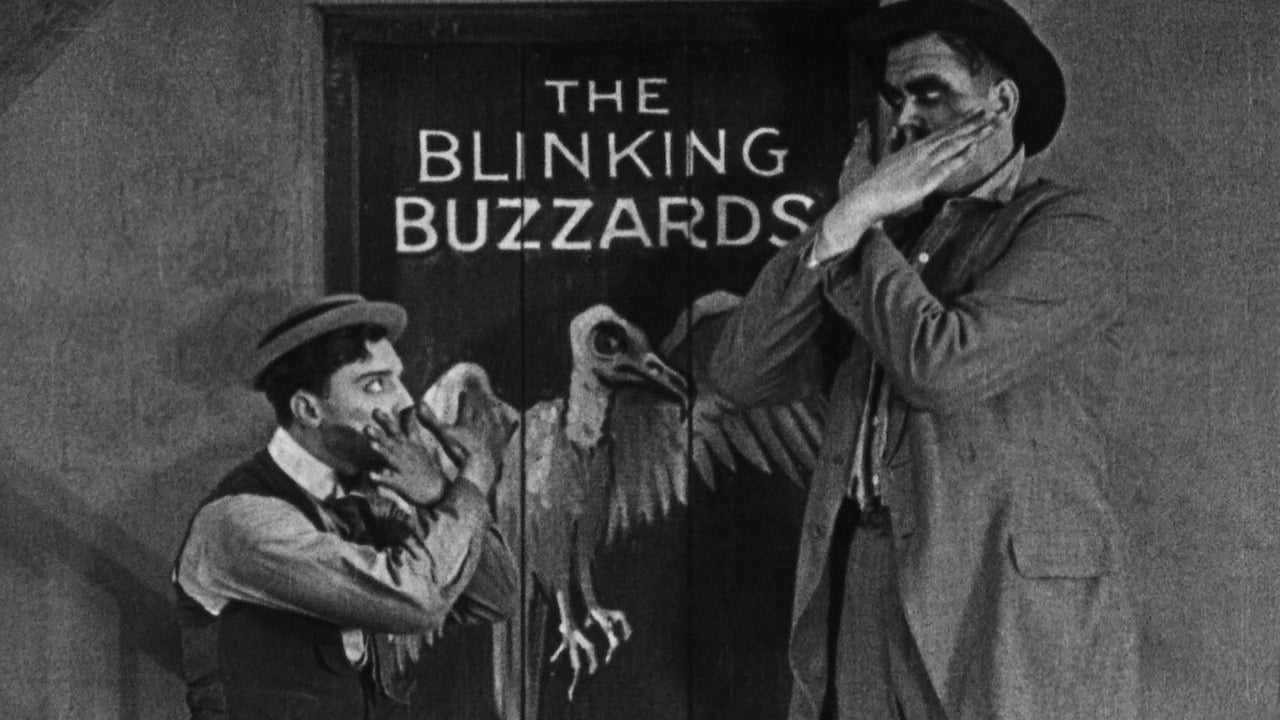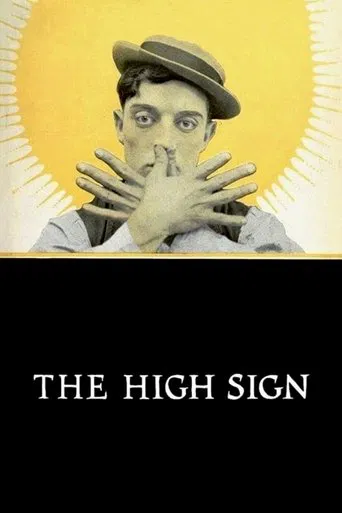

This movie is chock full of visual gags. It starts of establishing a plot that seems a bit interesting (the guy getting two jobs at once), but you soon realize that this is only to facilitate a lot of different stunts and sight gags. The secret symbol of the evil gang here is also used well, and Keaton's inability to use in the correct situations. As the plot slowly progresses, the movie ends up in a situation where Keaton is in a man's house for two different reasons (that oppose each other), and the house is full of traps. When Keaton ends up getting chased around in this house, there's just minutes of fun, jumping from one room to the other, often with big sets consisting of several rooms at once. It's great how much Keaton manages to squeeze into this movie's 20 minute run time.
... View MoreThe entrance of Buster Keaton's unnamed character in 'The High Sign (1921)' is, in some ways, reminiscent of Chaplin's Little Tramp persona. The wandering vagrant, named only Our Hero, is booted off a moving train, and lands in an unknown town, the audience denied any back-story or unnecessary exposition. Wandering into a nearby theme park, Buster deftly snatches a newspaper from a moving carousel (done so casually that he doesn't look like he's even trying), and attempts to read the mammoth broadsheet. In search of a job, he happens upon an opening for a talented sharp-shooter, and, despite inadvertently gunning down a duck with his practice shots, Buster feels that he's qualified enough for the position. Chaplin's Tramp was never averse to breaking the rules if he wasn't hurting anybody who didn't deserve it, and Keaton's Hero is no different. By rigging an ingenious dog-powered bell-ringer to falsify the carnival stall, Buster fools his massive employer into believing that he is an ace with the rifle.But, of course, if the plan had gone smoothly, then there wouldn't have been a story to tell. It seems that the employer is also a member of the Blinking Buzzards mob, a bold bad bunch of blood-thirsty bandits with a curious affinity for the letter "b." Buster is enlisted to assassinate one of the gang's enemies, and, by a curious turn of events, is also employed as that very same man's bodyguard (our hero, ever the hopeless romantic, accepts the latter job only to impress the target's pretty daughter, played by Bartine Burkett). When he steadfastly refuses to carry out the hit, Buster's reckless bid to escape the Buzzards' fists leads him on a farcical anarchic chase through concealed doorways and hidden compartments, a madcap comedic set-piece that never takes the time to slow down. Despite this memorable virtuoso finale, Keaton apparently felt unsure of the quality of his first independent two-reeler, and 'The High Sign' was shelved until the following year, when a broken ankle slowed the performer's output.
... View MoreA BUSTER KEATON Silent Short.Giving THE "HIGH SIGN" reveals members of the Blinking Buzzards, a nasty gang of ruffians who expect Buster to kill a wealthy old man - the same gentleman who's just hired Buster to be his bodyguard.Lots of physical comedy in this little film, as Keaton first fools around a shooting arcade and then gets to outwit the Buzzards in the old man's mansion. The ingenious cutaway set, showing at once four rooms on two floors, was sized specifically to Buster's proportions and it's fun watching him rapidly use the trap doors & secret panels while being chased by the villains.Born into a family of Vaudevillian acrobats, Buster Keaton (1895-1966) mastered physical comedy at a very early age. An association with Fatty Arbuckle led to a series of highly imaginative short subjects and classic, silent feature-length films - all from 1920 to 1928. Writer, director, star & stuntman - Buster could do it all and his intuitive genius gave him almost miraculous knowledge as to the intricacies of film making and of what it took to please an audience. More akin to Fairbanks than Chaplin, Buster's films were full of splendid adventure, exciting derring-do and the most dangerous physical stunts imaginable. His theme of a little man against the world, who triumphs through bravery & ingenuity, dominates his films. Through every calamity & disaster, Buster remained the Great Stone Face, a stoic survivor in a universe gone mad.In the late 1920's Buster was betrayed by his manager/brother-in-law and his contract was sold to MGM, which proceeded to nearly destroy his career. Teamed initially with Jimmy Durante and eventually allowed small roles in mediocre comedies, Buster was for 35 years consistently given work far beneath his talent. Finally, before lung cancer took him at age 70, he had the satisfaction of knowing that his classic films were being rediscovered. Now, well past his centenary, Buster Keaton is routinely recognized & appreciated as one of cinema's true authentic geniuses. And he knew how to make people laugh...
... View MoreAlthough "The High Sign" is a short film and not very well known, in many ways it is one of Keaton's best. It is non-stop entertainment, especially because the plot is very nearly irrelevant and the gags are so constant. What makes this so special in the development of movie comedy are the shooting gallery scene and the trapdoor house. These are examples of quintessential American slapstick, and they have been copied hundreds of time since 1921. There is also one small special effect in the midst of all the comedy that really caught my eye: Someone spikes Keaton's drink with either alcohol/poison (we are not told) and Keaton sips it. He can tell it is spiked, and looks into the cup, and we see in the drink the image of the rear of a horse kicking it's hind legs. This obvious allusion to the 'drink with a kick' is not only funny, but it is the essence of cinema: show not tell. I highly recommend this one for anyone looking for a short, innovative, hilarious comedy.
... View More